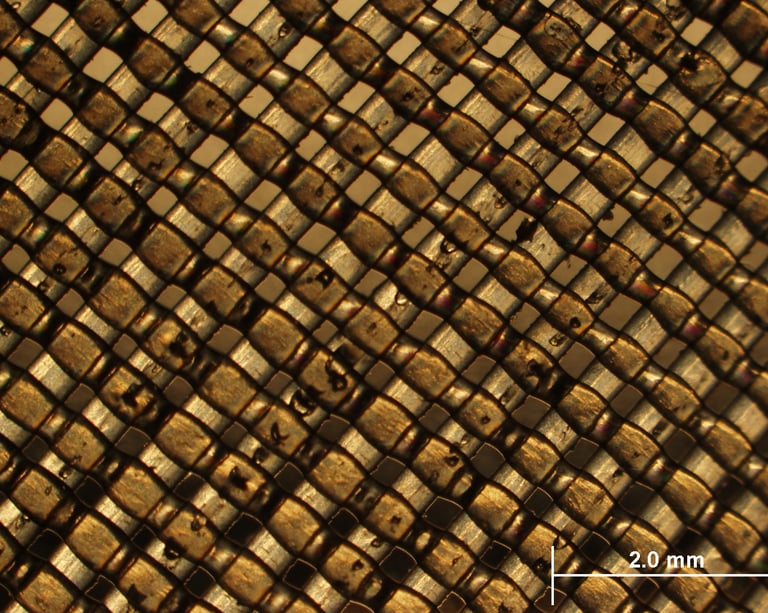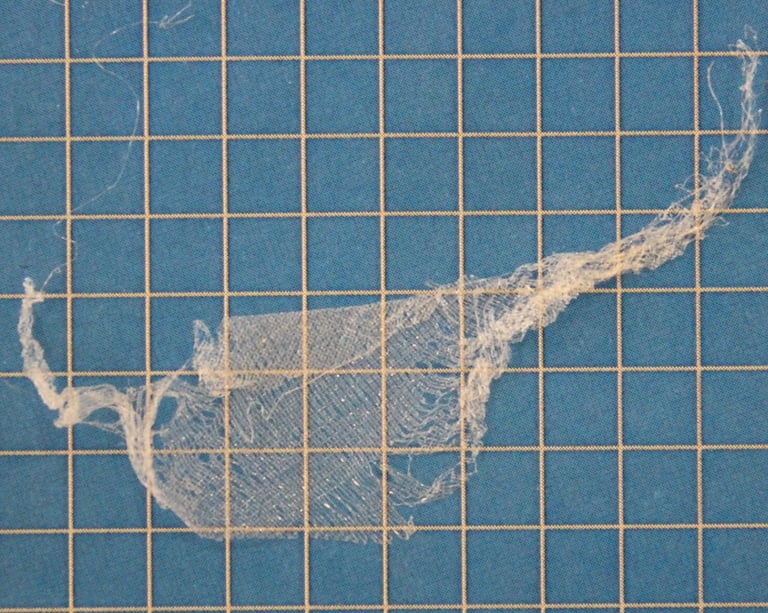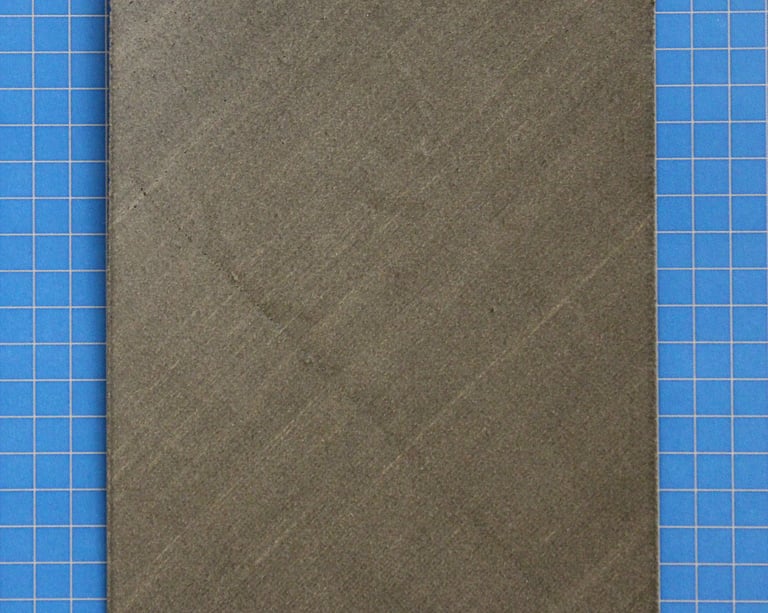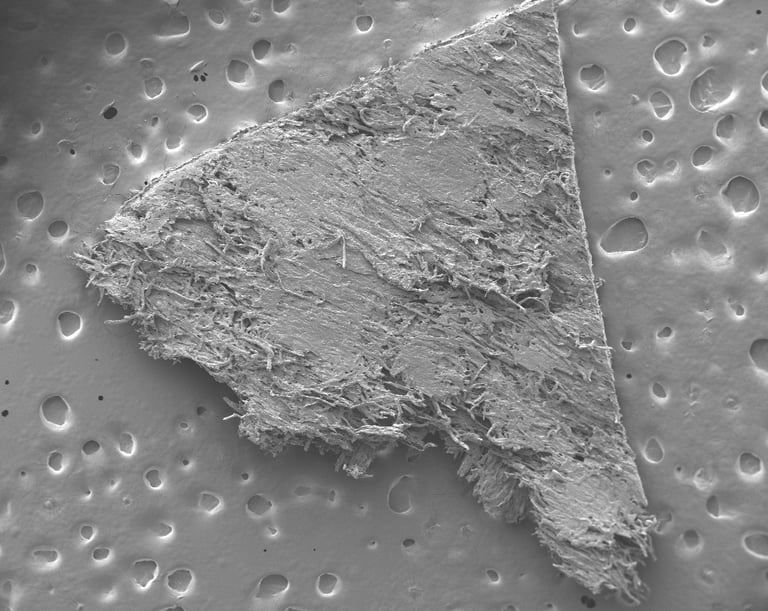3D TEXTILES
3D printing offers a powerful shift in how we design and produce clothing—moving from traditional, multi-step, manual methods to a streamlined, digital-first approach. This project explores custom nylon-based formulations tailored for Fused Filament Fabrication to create flexible, durable, and wearable textiles. The goal: printable garments with the comfort and performance of traditional fabrics, designed with smart patterns to allow stretch, fit, and movement right out of the printer.
3D Printed Clothing Ensembles for The Next Generation Navy
Year: 2015
Customer: NAVY
The Puzzle
What was the challenge? Why was it worth solving?
Traditional garment production is a complex, multi-step process: fiber spinning, fabric weaving, cutting, sewing, often slow, invasive, and prone to poor fit. As the textile industry shifts toward rapid prototyping and mass customization, the need for faster, more precise, and localized manufacturing grows.
3D body scanning and 3D printing offer promising solutions, yet current printable materials and techniques fall short of replicating the flexibility, strength, and comfort of conventional textiles.
The challenge is to bridge this gap: to engineer materials and print patterns that can match the tactile and mechanical performance of traditional fabrics, meeting the Navy’s need for on-demand clothing and gear that not only looks like textiles but feels and functions like them too.
The Game Plan
How the problem was approached — strategy, tools, and intent.
The plan was to develop polymeric materials and print strategies that yield fabric-like structures with the mechanical strength, flexibility, and breathability of standard military textiles such as NYCO.
Formulate blends of nylon polymers (6, 6-12, 11, 12), tuned for flexibility and printability via chain length variation, plasticizers, and elastomer additives.
Extrude these blends in-house into FFF-compatible filaments.
In parallel, design smart print patterns combining these blends with water-soluble materials like PVA. Once printed, dissolving PVA will create micropores, giving the final material breathability and comfort.
The goal was to demonstrate printed samples that mimic the key performance attributes of traditional uniform fabrics.
What Actually Happened
The results. The breakthroughs. Maybe even a few surprises.
The goal of the project was to develop 3D printable filaments and print strategies that mimic the comfort and performance of NYCO fabrics. We identified suitable materials, produced custom filaments, and evaluated printability and fabric-like properties.
Material Selection & Modification: Nylon 11 and Taulman 618 were modified with plasticizers and cellulose derivatives. Plasticizers improved flexibility by ~50%, and cotton flock (up to 50%) was incorporated to increase water absorption and breathability.
Filament Production & Printing: Flexible, custom filaments were successfully extruded and printed using FFF. A smaller nozzle and modified print files enabled the creation of fine, flexible, cloth-like specimens.
Performance Testing: While flexibility and tensile strength of printed fabrics were lower than NYCO, air permeability was much higher—indicating room for pore size optimization. Cotton additions improved both water absorption and flexibility.
Design Adjustments: Printing on NYCO fabric helped resolve surface finish issues. Launderability tests showed no degradation in print quality or performance.
In short, this effort validated the potential of nylon-based blends for textile printing and laid the groundwork for further refinement of both material and process to meet military textile standard
Show & Tell
Visuals, prints, textures, data — what it looked like in the real world.




Microscopy image of fabrics with pre-designed porosity: Porosity by design, because comfort starts at the micron scale.
Very thin piece of fabricated fabrics – felt like feather: Printed textile so light, it practically disappeared in your hand.




6" specimen fabricated using thermoplastic/cotton (30%) blend: Who said you can't extrude the unextrudable? Challenge accepted.
SEM of the thermoplastic/cotton blend showing cotton strand aligning in the direction of extrusion: Cotton in line, extrusion brings order to softness.
Lessons from the Lab
What worked. What didn’t. What was learned along the way.
Material Formulation Is Everything: The base polymer plays a critical role in determining fabric-like properties.
Additives Can Dramatically Shift Performance: Incorporating plasticizers and cotton flock improved flexibility and water absorption, key features for comfort. However, higher cotton content required adjustments to the print setup, including nozzle size.
Porosity Can Be Designed, Not Just Formulated: Smart printing patterns and dissolvable support materials (like PVA) showed promise for tuning air permeability, opening a path toward breathable, 3D printed garments.
Filament Quality Drives Print Quality: Small changes in formulation had outsized effects on extrusion consistency and final print performance. Precise control during filament production was essential for reliable fabric-like prints.
Surface Matters: The appearance and texture of printed fabrics were influenced by the print surface. Printing directly onto NYCO fabric helped eliminate gloss and improved textile realism.
Multifunctional Blends Are Feasible: The combination of mechanical strength from nylon and comfort properties from cotton demonstrates that hybrid filaments can bring together performance and wearability in a single material.